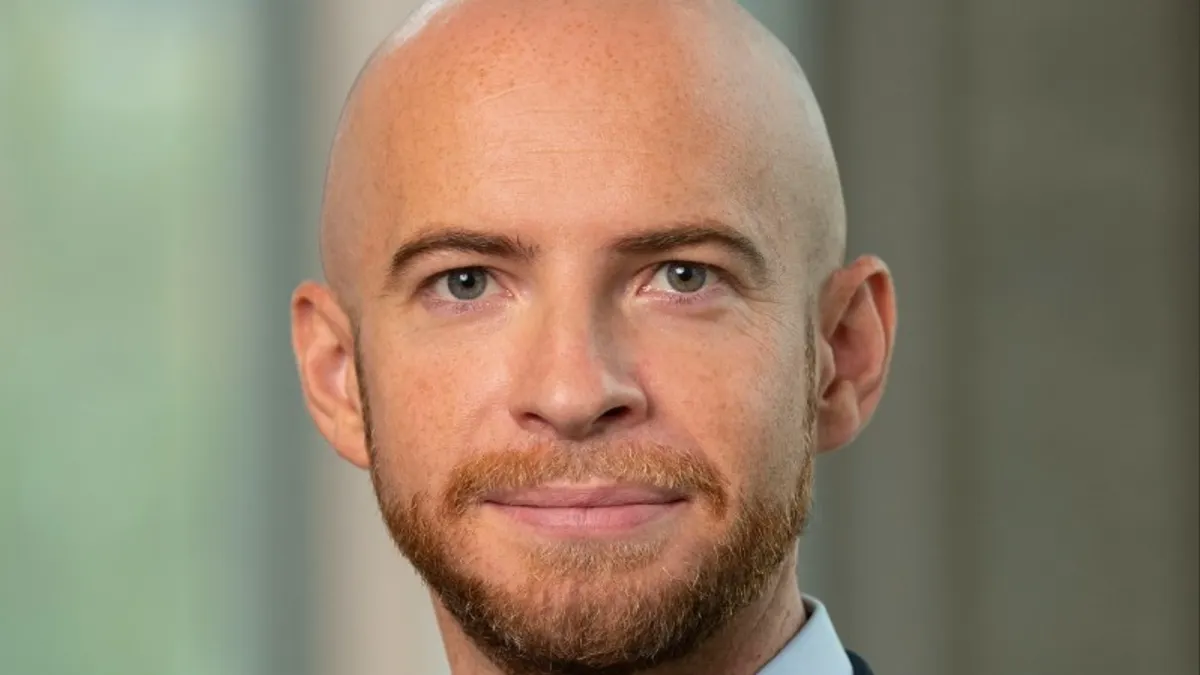Life expectancy in the U.S. is continuing to plunge, and “deaths of despair” have driven much of the recent decline.
Research published in JAMA Internal Medicine shed more light on the morbid trend and how it has particularly impacted men. According to the study, the gap between how long American men and women live grew to 5.8 years in 2021. Although women have long outlived men, the discrepancy is now the largest it’s been since 1996.
Unintentional injuries and chronic illnesses such as diabetes and heart conditions were often to blame for the discrepancy prior to the pandemic. But in the last few years, COVID-19, suicide and drug overdoses have widened the gap further.
“We have brought insights to a worrisome trend,” Brandon Yan, a UCSF internal medicine resident physician, research collaborator at Harvard Chan School and a co-author of the study, said in a statement.
Why are the death rates so much higher for men? In this study, led by Harvard T.H. Chan School of Public Health and UC San Francisco, the authors noted that “exposure at work, reluctance to seek care” and incarceration likely contributed to the disproportionate impact of COVID on men.
Drug- and alcohol-related deaths can also create a more meaningful drag on overall life expectancy because victims often die young.
The new reality has reversed years of progress made by public health campaigns such as efforts to lower smoking rates. And although the trend was slightly offset by positive gains in cancer-related deaths, maternal mortality also had a negative impact on life expectancy for young American women.
“We’re one of the only high-income countries [maternal mortality] is getting worse, not better,” Mary-Ann Etiebet, executive director, Merck for Mothers, told PharmaVoice earlier this year.
Yan said he believes medical interventions are no longer derailing this crisis. But pharma could have a role to play in addressing many of these public health challenges.
Mental health
Access to mental health resources, the inadequacies of available therapies and Big Pharma’s general abandonment of psychiatric drug development are well known. In response, mental health R&D has been booming at the earlier-stage startup level — and psychedelic treatments are a big part of the renaissance.
MAPS Public Benefit Corporation, a nonprofit research company, plans to file for an FDA approval of a therapy based on MDMA — the active ingredient in the street drug “Molly” — to treat PTSD before the end of the year. If given the go-ahead next year as MAPS hopes, it would become the first new FDA-approved treatment for PTSD in over 20 years.
U.K.-based Compass Pathways has also been working a psilocybin-assisted therapy for treatment resistant depression through clinical trials for years and is now in late-stage studies. In addition, the candidate is being studied for PTSD and anorexia.
Pharma companies are exploring new drugs beyond the typical SSRIs for depression-related conditions. In the last four years, two antidepressant drugs, both neuroactive steroids targeting the gamma-aminobutyric acid A (GABAa) receptor, were approved for postpartum depression. And although one of those drugs — Biogen and Sage Therapeutics’ Zurzuvae — was rejected by the FDA this year for a major depressive disorder approval, Brii Biosciences is pushing ahead with a similar candidate in the space. Like Zurzuvae, Brii’s investigational drug BRII-296 is a GABAa receptor-positive allosteric modulator, but its single long-acting injection, which continues working for weeks after administration, could one day be provided during an outpatient visit. In addition to testing it for postpartum depression, Brii is exploring indications such as anxiety and other depressive disorders for the drug.
And to take the typical and taxing trial-and-error approach out of prescribing antidepressants, companies such as HMNC Brain Health are developing a pipeline of precision psychiatric therapeutics along with corresponding tests to identify which patients might benefit most from using them for depression, anxiety and more.
Opioids
The opioid epidemic long ago shifted from the doctor’s office to the streets, but pharma has been looking to play a role in how the country recovers.
Some are advancing new ways of delivering addiction-fighting meds.
Earlier this year, the FDA approved a new formulation for buprenorphine, a standard of care treatment for opioid abuse disorder. Developed by Braeburn, the time-released subcutaneous formulation called Brixadi offers a new tool in the opioid fight alongside daily sublingual options like Suboxone and the monthly injection Sublocade.
A slew of other companies have been hotly pursuing novel approaches to treating pain.
South Rampart Pharma is advancing a lead program for SRP-001, which it said offers an alternative to opioids without the liver and kidney toxicity currently associated with acetaminophen and other non-steroidal pain medications. The company won a fast track designation from the FDA in October.
Tris Pharma and Wex Pharmaceuticals, meanwhile, are in clinical development for novel pain medications with lower abuse potential than narcotics.
COVID-19
Last summer, COVID-related deaths fell to an all-time low of about 500 per week. Now, the rate has once again ticked up to over 1,000 per week, according to the CDC.
With several approved vaccines on the market, the focus from drug developers has shifted to easier modes of delivery, such as nasal sprays and a potential DIY vaccine that can be taken at home. Getting Americans to keep taking COVID vaccines is also a major focus for the industry.
A recent study led by AstraZeneca shed light on the extent to which immunocompromised people remain at risk for serious COVID-related illnesses and showed that in the U.K. they represented 22% of all COVID hospitalizations, 28% of ICU admissions due to COVID and 24% of all COVID deaths in 2022 despite only comprising about 4% of the total population.
Previously approved monoclonal antibodies, which can be used as a prophylactic by immunocompromised people, have been pulled from the market due to waning efficacy. But Invivyd has a mAb to meet this need in development and met with the FDA last summer to nail down a path to winning an emergency authorization for its candidate.

















